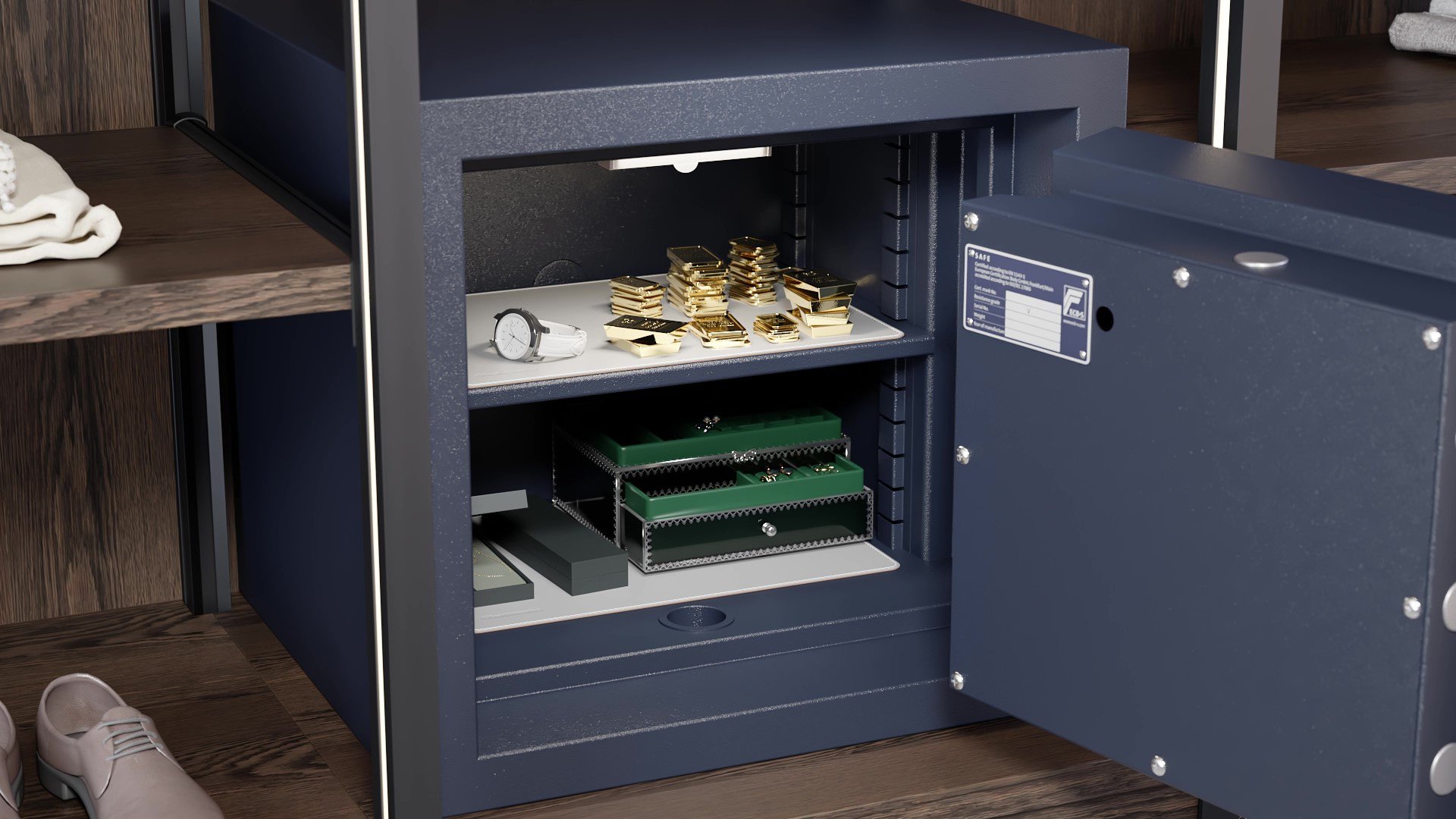
When investing in a safe, understanding security ratings and standards is essential to ensure you choose the right level of protection for your valuables. International certifications assess safes for burglary and fire resistance, providing clear benchmarks for security and reliability.
Below is an in-depth look at the most internationally recognised safe ratings and their implications for safe users. 
As consumer demands shifted towards more lifestyle-centric products, Chubbsafes has explored how to integrate advanced security features with modern design principles. The result is a new generation of home safes that offer both high levels of security and modern usability. Not only do these safes withstand physical attacks, but they also integrate seamlessly into home environments. Moreover, they combine advanced security features with cutting-edge materials, user-friendly interfaces, and ergonomic designs.
Burglary resistance is determined through rigorous testing by independent laboratories and maintained by certification bodies. These tests simulate real-world attacks using a wide range of tools, such as hammers, drills, and thermal cutting equipment. Some of the most well-known burglary resistance standards include:This classification applies to safes, vaults, and strongrooms, categorising them into Grades 0 to XIII The grade is determined based on the safe's ability to resist attack under controlled conditions. Higher grades indicate greater resistance and typically align with higher insurance coverage limits. The value limits will vary by country and insurer and should always be individually confirmed, but by way of comparison for safes:
Whereas vaults and strongrooms, whilst classified in the same way, from Grade 0, go up to much higher security levels reaching Grade XIII. Insurers view vaults and strongrooms differently and always by considering the complete scenario.
Cabinets tested to this standard fall into two categories:
The JIS certification evaluates safes for their resistance to fire. Fire resistance levels are categorized as follows:
This certification assesses the burglary resistance of safes based on their construction, lock strength, and ability to withstand forced entry. The classifications cover 12 classifications of burglary resistance:
This standard specifies burglary resistance requirements for safes, vault doors, and ATM safes, classifying them based on resistance to various attack methods. The classifications include:
 AS/NZ categorise by grade and from their standard. The table shows how they would classify the grades in the market.
AS/NZ categorise by grade and from their standard. The table shows how they would classify the grades in the market.
Fire-resistant safes are essential for protecting paper documents, electronic media, and other sensitive items from extreme heat and smoke damage. Fire testing is conducted under controlled conditions, exposing safes to high temperatures while monitoring internal temperatures.
Note that the standards listed below are some, but by no means all that can be encountered in the world:
This standard tests safes for their ability to withstand fires at high temperatures, with classifications based on protection duration:
The NT Fire 017 standard classifies fire-resistant safes and cabinets based on how long they can protect their contents under extreme heat. The classification system is divided into two main categories, depending on the type of material being protected:
Classification for Paper (P): These safes and cabinets are designed to protect paper documents from fire. Paper starts to degrade at around 175°C, so the internal temperature must stay below this level.
Classification for Data Media (D or DIS): Data media, such as magnetic tapes, hard drives, and USBs, are much more sensitive to heat and humidity. The internal temperature must remain below 50°C, and humidity should stay under 85% to prevent damage.
This American standard evaluates safes by exposing them to temperatures up to 1,700°F (927°C) while monitoring internal temperatures. UL72 is very similar to EN 1047-1 with the difference that manufacturers can chose whether to include the impact (drop test) component or not. In EN 1047-1 it is mandatory.
JIS also includes fire resistance ratings, categorizing safes based on the duration they can maintain internal temperatures safe for paper and digital media storage:
There is no Chinese standard as yet, it is a work in progress.
This standard sets requirements for fire-resistant safes and cabinets, ensuring they can protect contents from extreme heat exposure for specified durations:
To ensure you select the best safe for your needs, consider the following factors:
Choosing a safe with the appropriate certifications ensures maximum protection for your valuables, whether against burglary, fire, or both. Understanding these ratings enables you to make an informed decision that aligns with your security needs, insurance requirements, and peace of mind.
Copyright © 2024 Gunnebo Safe Storage AB. All rights reserved.
Comments (1)